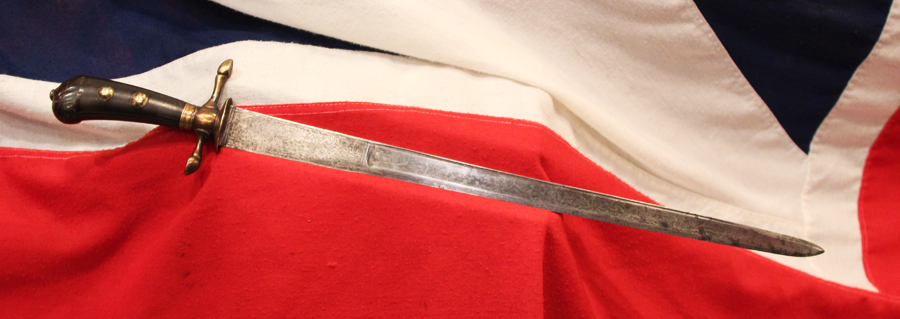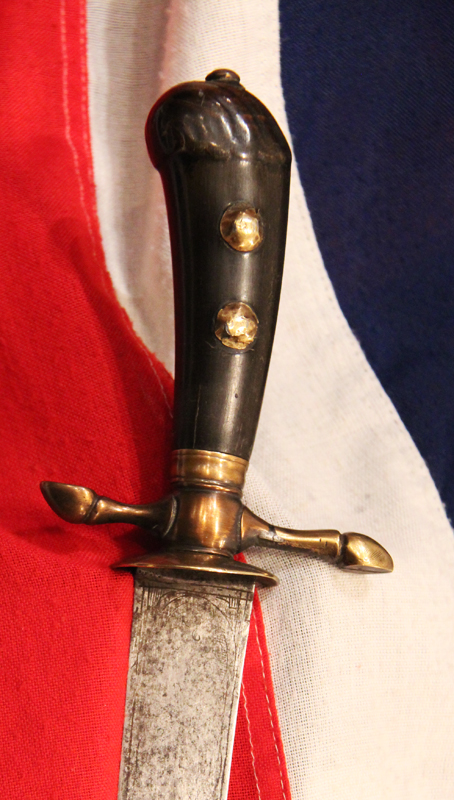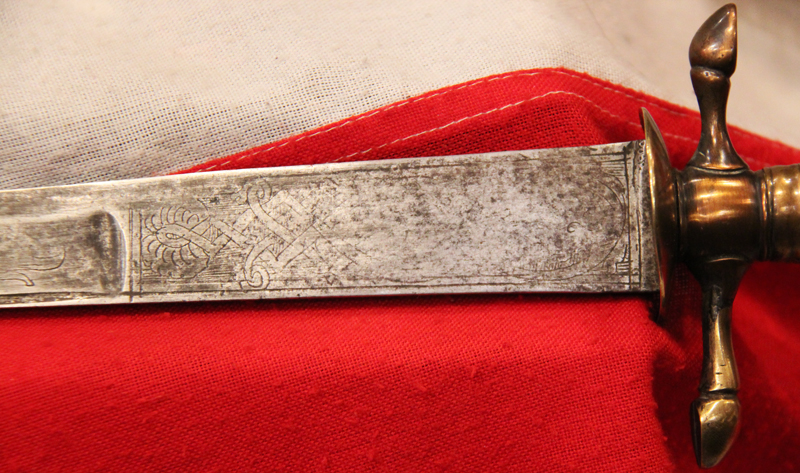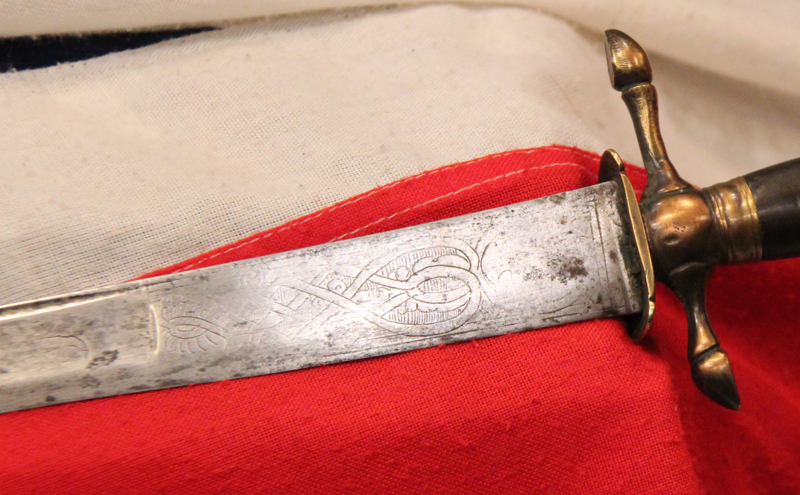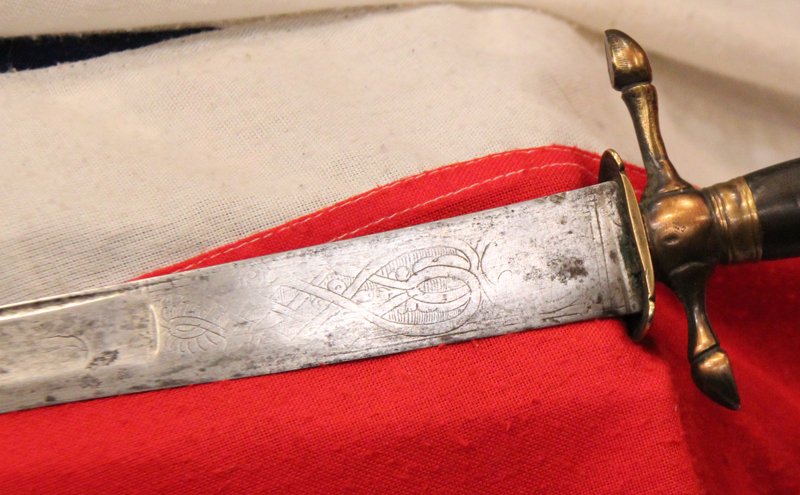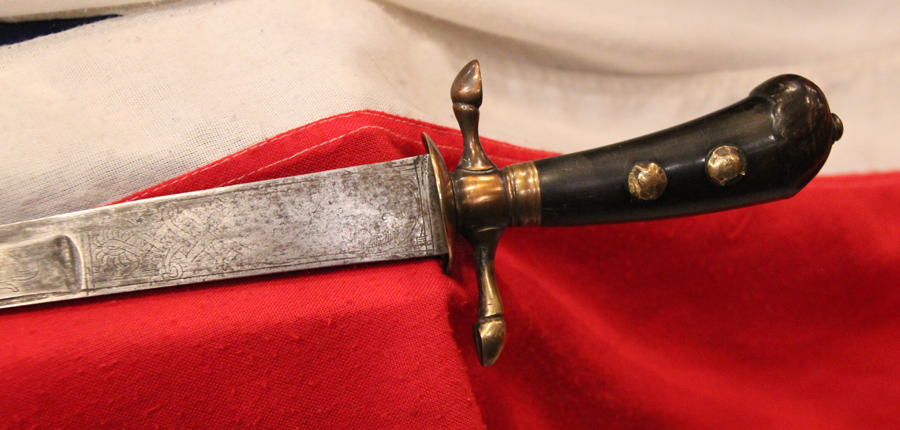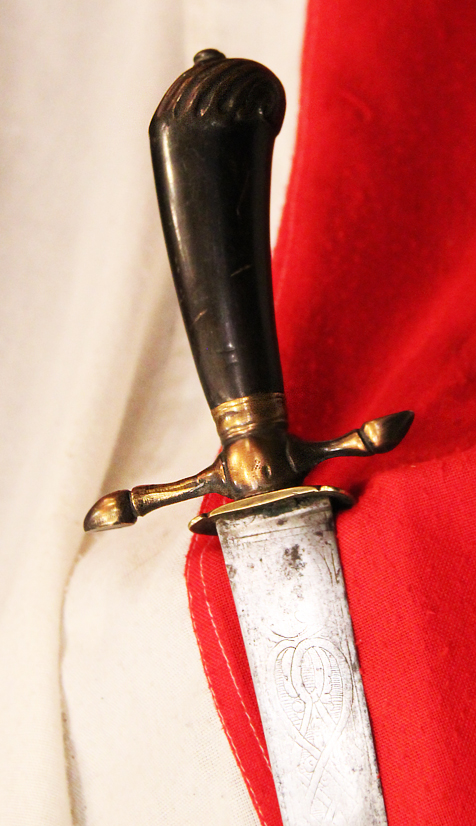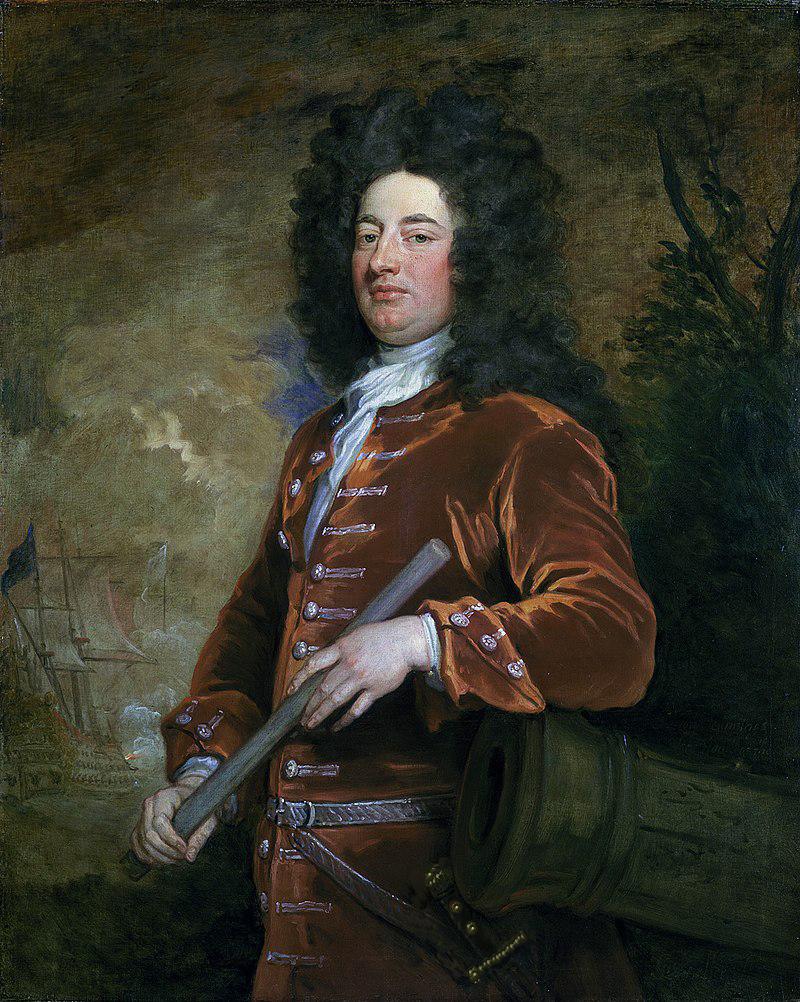A Fine and Beautiful Carved Horn Hilted 18th Century Royal Naval Officer's Hanger Sword, Cutlass or Cuttoe
American Anglo French wars period, made Circa 1750's, called during it's era of service use a ‘cuttoe’, a variation on the word cutlass, but a variation used specifically by naval officer's. Oval guard deer hoofed quillon form, carved horn handle with carved pommel and twin gilt capped mounting rivets. Single edged blade with a small return false edge and double fuller. Finely geometric scroll engraved blade with a leaping stag slightly obscured through time within the fuller on both sides.
Although also used on land, the cutlass is best known as the maritime weapon of choice. A naval side-arm, its popularity was likely because it was not only robust enough to hack through heavy ropes, canvas, and wood, but short enough to use in relatively close quarters, such as during boarding actions, in the rigging, or below decks.
Another advantage to the cutlass was its simplicity of use. Employing it effectively required less technical skill than that required to master a rapier or light small sword, and it was more effective as a close-combat weapon than a full-sized sword would be on a cramped ship.
Cutlasses are famous for being used by pirates, although there is no reason to believe that Caribbean buccaneers invented them, as has occasionally been claimed. However, the subsequent use of cutlasses by pirates is well documented in contemporary sources, notably by the pirate crews of William Fly, William Kidd, and Stede Bonnet. French historian Alexandre Exquemelin reports the buccaneer François l'Ollonais using a cutlass/cuttoe as early as 1667. Pirates used these weapons for intimidation as much as for combat, often needing no more than to grip their hilts to induce a crew to surrender, or beating captives with the flat of the blade to force their compliance or responsiveness to interrogation.
Owing to its versatility, the cutlass was as often an agricultural implement and tool as it was as a weapon (cf. machete, to which the same comment applies) that was used commonly in rain forest and sugarcane areas, such as the Caribbean and Central America. In their most simplified form they are held to have become the machete of the Caribbean.
Code: 21684
750.00 GBP

